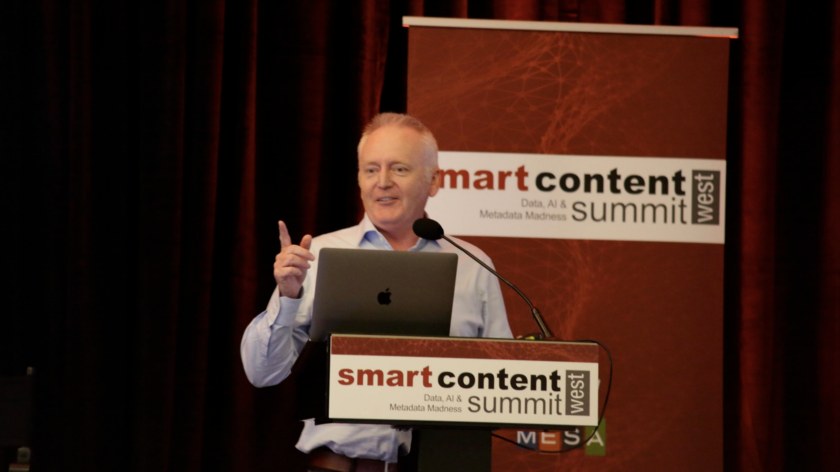M+E Daily

Smart Content West: M&E Companies Must Provide Consumers with More Personalized Content
Story Highlights
Media and entertainment (M&E) companies today need to provide unique, personalized content, driven by a deep understanding of the individual, due to the growing popularity of over-the-top (OTT) streaming services, Richard Whittington, SVP and GM of M&E, Industry Cloud Solutions at SAP, said Feb. 27 at the Smart Content Summit in Los Angeles.
There’s a “hypothesis that media is now retail, and for some people that’s a big stretch and, for some people, it’s heresy,” he said during the session “How Direct to Consumer is Changing the Rules for M&E.” But M&E companies must adapt to all the change we’re seeing to survive and thrive, according to Whittington.
The average attention span of a U.S. adult has become eight seconds, according to a Microsoft study from a couple of years ago that he cited. In comparison, he said, “a gold fish has an attention span of nine seconds.”
He added: “We live in a world of attention spans being very, very short. And, if we think about it, we’re all here to serve that consumer. Without the consumer – without the media consumer — we’re just making a bunch of content that’s going to sit in an archive.”
So, he went on to say, “if big data is the new oil, content is the king [and] attention is the ace” because that’s what M&E companies are after and, to get that attention, “you have to understand me, the consumer.”
Citing third-party data, he said about 31% of U.S. households now have more than one over-the-top (OTT) service subscription. “It’s a big market,” he said of OTT services, adding the OTT video service industry is expected to reach $30 billion by 2020.
To understand what a viewer will like in six months, M&E companies must manage the complexity of multiple touchpoints, both physical and digital, according to Whittington.
But it’s also essential to build consumer trust and loyalty if you’re seeking personal information from a viewer to drive that personalized experience, he noted. “If I feel I’m getting something for my information, I’m more likely to give it up,” he said.
M&E companies can also pull social activity info about a viewer to further increase level of personalization and it might make sense to provide that viewer with a personalized subscription offer and “up-sell” based on that person’s video consumption and social media activity, he said.
And that’s just the beginning because, by engaging with a viewer across the enterprise, an M&E company can really start to maximize impact, according to Whittington.
Enterprise application software provider SAP can help M&E companies use first-party data to drive all these personalized experiences, he said.
Referring to a comment that was made by John Canning, chair of the Producers Guild of America, at the summit earlier, Whittington said: “Maybe we do want to sell Jennifer Aniston’s sweater. But we don’t want to do it in an intrusive manner.” Canning had reminisced that in the early days of interactive media, “we were going to let everybody buy Jennifer Aniston’s sweater [but] that didn’t work out so well.”
Produced by the Media & Entertainment Services Alliance (MESA), in association with the Hollywood IT Society (HITS) and the Smart Content Council, Smart Content West was sponsored by Amazon Web Services, MicroStrategy, NeuLion, MarkLogic, SAP, Bob Gold & Associates, Ad-ID, DEG: The Digital Entertainment Group, and the Entertainment Merchants Association.









